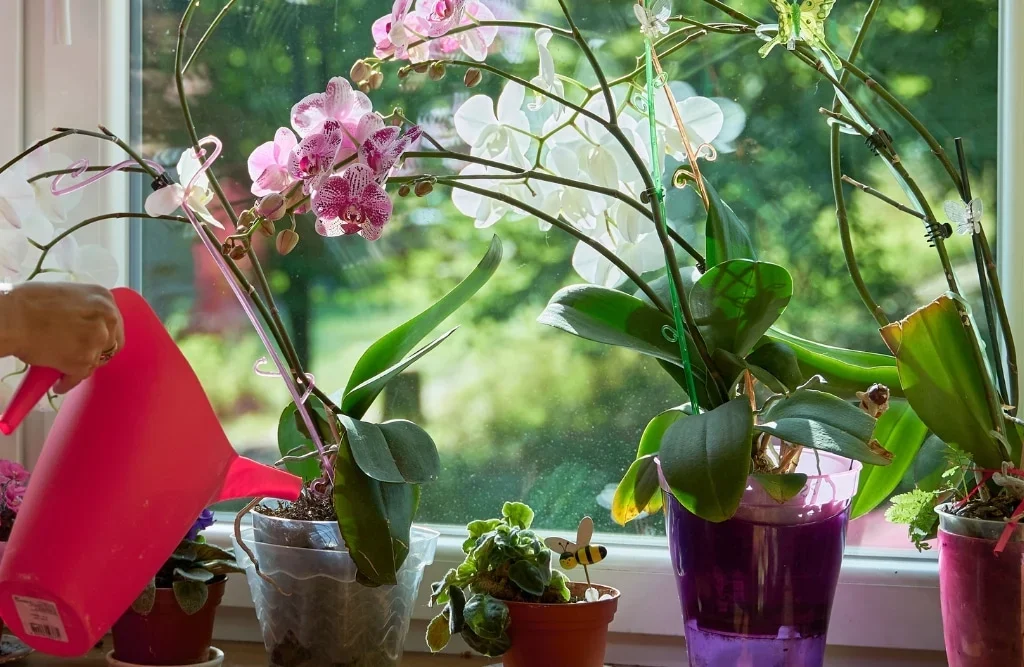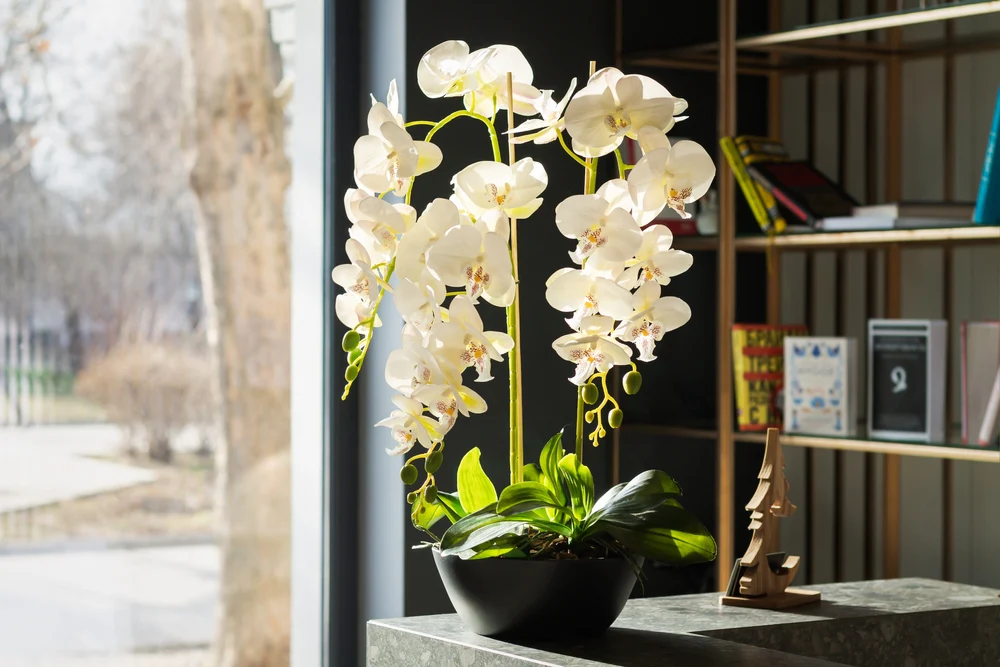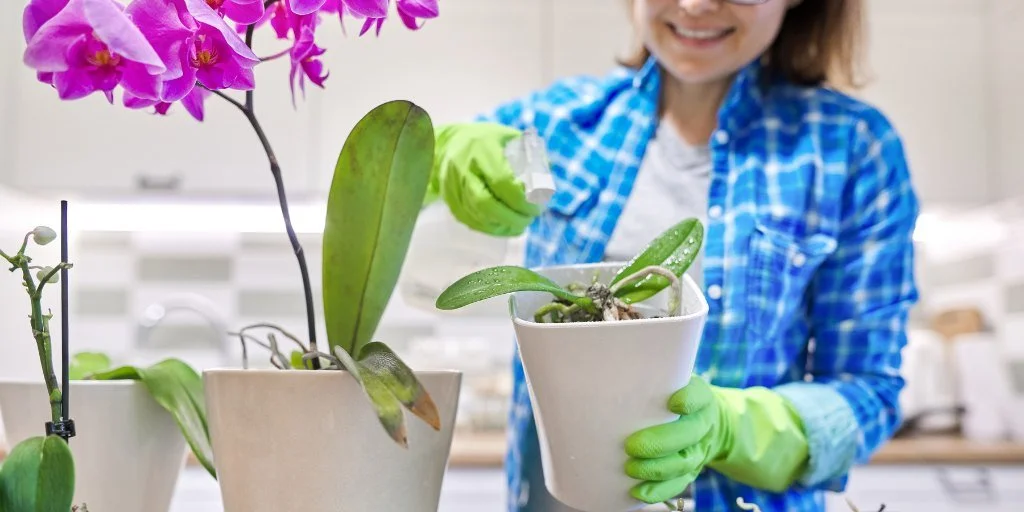Orchids are among the most beautiful and exotic flowering plants you can grow indoors. Their delicate blossoms, intricate patterns, and variety of colors add elegance and charm to any home. However, many people find orchids intimidating because of their reputation for being finicky or difficult to care for. The truth is, with the right knowledge and care, orchids can thrive indoors and bloom year after year.
If you’re ready to master the art of orchid care, this guide will walk you through everything you need to know about how to care for an orchid plant indoors properly — from choosing the right variety to watering, lighting, fertilizing, and troubleshooting common problems. Let’s get started!

Understanding Orchids: The Basics
Orchids belong to the family Orchidaceae, one of the largest and most diverse families of flowering plants. The most common orchid found indoors is the Phalaenopsis, also known as the moth orchid, prized for its long-lasting blooms and relative ease of care.
Orchids are epiphytes in their natural habitat, meaning they grow on trees rather than in soil. This affects how you care for them indoors, especially when it comes to potting and watering.

Choosing the Right Orchid for Indoor Growing
For beginners, the Phalaenopsis orchid is highly recommended. It’s widely available, blooms beautifully, and adapts well to indoor environments. Other popular indoor orchids include:
- Cattleya: Known for fragrant and large flowers.
- Dendrobium: Produces multiple flower spikes.
- Oncidium: “Dancing lady” orchids with small, vibrant flowers.
Selecting a healthy orchid from a reputable nursery is crucial for success. Look for plants with firm, green leaves and healthy roots visible through the pot or transparent plastic container.

Ideal Environment for Indoor Orchids
1. Lighting
Orchids need bright, indirect light to bloom and grow well.
- Place your orchid near an east or west-facing window.
- Avoid direct midday sun, which can scorch the leaves.
- If natural light is limited, consider using a grow light designed for flowering plants.
Signs of inadequate light: Dark green leaves with no blooms.
Signs of too much light: Yellowish or scorched leaves.
2. Temperature
Orchids thrive in temperatures between 65°F to 75°F (18°C to 24°C) during the day and slightly cooler at night.
- Avoid placing your orchid near drafts, air conditioners, or heaters.
- Some orchids need a temperature drop at night to stimulate blooming—this mimics their natural environment.
3. Humidity
Orchids prefer moderate to high humidity — ideally between 50% to 70%.
- Indoor environments, especially with heating or air conditioning, can be dry.
- Increase humidity by placing the orchid pot on a tray filled with water and pebbles (ensure the pot doesn’t sit directly in water).
- Use a humidifier or mist the leaves lightly, but avoid excess moisture that can promote fungal diseases.

How to Water Your Orchid Properly
Watering is one of the most crucial and misunderstood parts of orchid care.
- Frequency: Water approximately once a week during the growing season; reduce in winter.
- Method: Water thoroughly, allowing water to flow through the potting media and drain out the bottom. Avoid letting your orchid sit in standing water.
- Potting media: Orchids are usually potted in bark or sphagnum moss, which dries out faster than soil.
- Check moisture: Stick your finger into the potting media or lift the pot to judge weight—if it feels light, it’s time to water.
Tip: Overwatering causes root rot, while underwatering can cause shriveled roots and drooping leaves.
Proper Potting and Repotting
Orchids require special potting media to mimic their natural epiphytic conditions.
- Use orchid bark mix or sphagnum moss, which provides aeration and drainage.
- Repot your orchid every 1-2 years or when the potting media breaks down.
- Best time to repot is right after blooming or when new roots appear.
- Choose a transparent pot with drainage holes to monitor root health and allow light to reach the roots.
Fertilizing Orchids for Optimal Growth
Feeding your orchid helps promote healthy leaves and vibrant blooms.
- Use a balanced orchid fertilizer (20-20-20) or one specially formulated for orchids.
- Fertilize every 2 weeks during the growing season with diluted fertilizer (half strength).
- Reduce fertilizing frequency to once a month during winter.
- Flush the potting media with plain water every month to avoid salt buildup.
Encouraging Orchids to Bloom
Getting your orchid to bloom indoors requires patience and proper care.
- Provide adequate light and maintain consistent temperature.
- Some orchids need a cooling period (temperature drop at night) to trigger flowering.
- Remove spent flower spikes after blooming to redirect energy.
- Avoid moving your orchid frequently as they don’t respond well to stress.
Common Orchid Problems and How to Fix Them
| Problem | Cause | Solution |
|---|---|---|
| Yellowing leaves | Overwatering, poor drainage | Adjust watering, repot in fresh media |
| Drooping or wrinkled leaves | Underwatering or root damage | Water thoroughly, check roots |
| No blooms | Insufficient light or nutrition | Increase light, fertilize properly |
| Root rot | Overwatering, poor drainage | Remove damaged roots, repot immediately |
| Pests (mealybugs, scale) | Poor air circulation, dry leaves | Wipe with insecticidal soap, improve airflow |
Additional Tips for Orchid Care Success
- Clean leaves: Dust can block light; gently wipe leaves with a damp cloth.
- Avoid drafts: Sudden temperature changes cause stress.
- Rotate your orchid: For even growth, rotate the pot every week.
- Be patient: Orchids can take several months to bloom after care adjustments.
Conclusion
Caring for an orchid indoors may seem challenging at first, but with the right environment and consistent attention, your orchid can thrive beautifully. Remember to provide bright, indirect light, maintain moderate humidity, water correctly, and feed regularly. Watch your orchid closely and respond to its needs to enjoy stunning blooms and lush foliage year-round.
Orchids are not only a symbol of elegance and luxury but also a rewarding hobby that connects you with nature. Start your orchid journey today with confidence, and enjoy the beauty and tranquility this exquisite plant brings to your home.





Leave A Comment